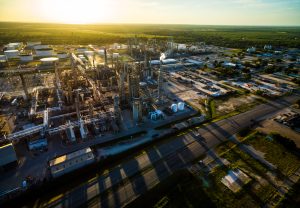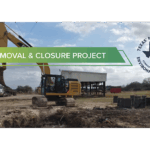
In today’s increasingly environmentally conscious world, there is a growing need to assess and mitigate potential hazards and contamination risks associated with properties. One vital tool in this process is the Phase 2 Environmental Site Assessment (ESA), which provides a comprehensive evaluation of a site’s environmental conditions. In this article, we will delve into the significance, process, regulatory standards, challenges, and impact of Moore Phase 2 Environmental Site Assessments.
Understanding the Importance of Phase 2 Environmental Site Assessments
Phase 2 Environmental Site Assessments play a crucial role in safeguarding the environment and public health. These assessments are conducted to determine the presence, extent, and impact of hazardous substances, pollutants, or contaminants in soil, groundwater, and air at a specific property. The findings from a Phase 2 ESA assist in making informed decisions regarding site remediation and future land use.
The Role of Phase 2 Assessments in Environmental Protection
Phase 2 Environmental Site Assessments serve as a vital tool in environmental protection. By identifying potential contamination risks early on, these assessments contribute to the prevention of pollution and the protection of natural resources. They also aid in maintaining compliance with environmental laws and regulations and ensure that site remediation efforts are effective and sustainable.
One of the key benefits of Phase 2 assessments is their ability to provide a detailed understanding of the potential sources and pathways of contamination. This knowledge allows environmental professionals to develop targeted remediation strategies that address the specific contaminants present at a site. By tailoring the remediation approach, resources can be utilized more efficiently, resulting in a more cost-effective and timely cleanup process.
Key Components of a Phase 2 Environmental Site Assessment
A Phase 2 ESA consists of several essential components that collectively provide a comprehensive evaluation of a site’s environmental conditions. These components include:
- Review of historical records and available documentation related to the site
- Initial site inspection and sampling
- Laboratory analysis and data interpretation
- Evaluation of potential sources and pathways of contamination
- Risk assessment and identification of potential exposure pathways
During the review of historical records and available documentation, environmental professionals delve into the site’s past to uncover any potential activities or incidents that may have contributed to contamination. This thorough investigation helps in identifying the most likely sources of pollutants, which then guides the subsequent steps of the assessment process.
The initial site inspection and sampling involve collecting soil, groundwater, and air samples from various locations on the property. These samples are then sent to a laboratory for analysis, where sophisticated techniques are used to determine the presence and concentration of contaminants. The data obtained from the laboratory analysis is carefully interpreted to understand the extent of contamination and its potential impact on the environment and public health.
Once the potential sources and pathways of contamination have been identified, a risk assessment is conducted to evaluate the likelihood and severity of exposure to contaminants. This assessment takes into account factors such as the nature of the contaminants, the proximity of sensitive receptors (such as residential areas or water bodies), and the potential migration of contaminants through soil or groundwater. By understanding the risks associated with the contamination, appropriate remediation measures can be implemented to protect human health and the environment.
The Process of Moore Phase 2 Environmental Site Assessments
The process of conducting a Moore Phase 2 Environmental Site Assessment involves several sequential steps that ensure a thorough evaluation of the site’s environmental conditions.
Before diving into the detailed process, it’s crucial to understand the significance of Moore Phase 2 Environmental Site Assessments. These assessments are essential for identifying potential environmental liabilities and risks associated with a property. They play a critical role in due diligence processes for property transactions, regulatory compliance, and overall environmental management.
Initial Site Inspection and Sampling
The initial site inspection is conducted to visually assess the property and identify potential areas of concern. This includes examining soil conditions, vegetation patterns, water sources, and nearby land uses. The experienced environmental professionals conducting the assessment pay close attention to any signs of contamination, such as staining, odors, or unusual vegetation growth patterns. Following this visual inspection, soil, groundwater, and air samples are collected from predetermined locations to analyze for the presence and concentration of hazardous substances or contaminants.
It’s worth noting that the selection of sampling locations is a critical aspect of the process. Environmental consultants strategically choose sampling points based on factors such as historical land use, potential contamination sources, and hydrogeological conditions. This strategic approach ensures that the collected samples provide a representative snapshot of the site’s environmental conditions.
Laboratory Analysis and Data Interpretation
The collected samples are then sent to an accredited laboratory for analysis. The laboratory employs state-of-the-art analytical techniques to determine the concentration levels of various contaminants present in the samples. These contaminants may include heavy metals, volatile organic compounds, petroleum hydrocarbons, and other hazardous substances. The data obtained from the laboratory analysis is carefully interpreted by environmental professionals to understand the potential risks associated with the site.
Furthermore, the data interpretation phase involves comparing the analytical results against relevant regulatory standards and guidelines. This comparison helps in evaluating whether the concentrations of contaminants exceed permissible limits set by environmental regulations. Based on this evaluation, informed decisions can be made regarding the need for remediation, further investigation, or potential environmental risks to human health and the environment.
Regulatory Standards for Phase 2 Environmental Site Assessments
To ensure consistency and reliability, Phase 2 Environmental Site Assessments adhere to various regulatory standards. These standards include federal and state environmental laws, as well as industry-specific regulations.
Federal and State Environmental Laws
The Environmental Protection Agency (EPA) and relevant state agencies establish regulations and guidelines for Phase 2 Environmental Site Assessments. These laws aim to protect human health and the environment by setting standards for acceptable levels of contamination and outlining remediation requirements.
Compliance with Industry-Specific Regulations
In addition to federal and state regulations, specific industries may have their own standards and guidelines for conducting Phase 2 Environmental Site Assessments. Compliance with these industry-specific regulations ensures that potential hazards associated with specific activities, such as manufacturing, are thoroughly evaluated, mitigated, and managed.
Potential Challenges in Conducting Phase 2 Environmental Site Assessments
While Phase 2 Environmental Site Assessments are highly valuable, they also present certain challenges that professionals need to navigate.
Dealing with Contaminated Sites
Conducting Phase 2 Environmental Site Assessments on contaminated sites poses unique challenges. These include handling and disposing of hazardous materials safely, preventing cross-contamination during sampling, and ensuring the safety of personnel involved in the assessment process.
Mitigating Risks and Ensuring Safety
Phase 2 assessments may involve working in potentially hazardous environments. Professionals must take appropriate safety precautions to mitigate risks and protect their well-being. This includes wearing protective gear, following established protocols, and using reliable equipment.
The Impact of Moore Phase 2 Environmental Site Assessments on Property Transactions
Phase 2 Environmental Site Assessments have a significant impact on property transactions, influencing property value and informing land use decisions.
Influence on Property Value
A thorough and well-documented Phase 2 Environmental Site Assessment enhances transparency and provides potential buyers with confidence in the property’s environmental conditions. Knowing that a property is free from contamination can positively impact its value, making it an appealing investment option.
Implications for Property Development and Land Use
The findings from a Phase 2 Environmental Site Assessment shape the decisions made regarding property development and land use. If contamination is identified, appropriate measures can be taken to remediate the site and allow for safe, sustainable development that aligns with environmental regulations.
In conclusion, Moore Phase 2 Environmental Site Assessments are an essential tool in assessing and managing environmental risks and contamination hazards. By following a thorough process, adhering to regulatory standards, and considering potential challenges, these assessments provide valuable insights that influence property transactions and protect the environment for future generations.
If you’re facing environmental challenges or require a comprehensive Moore Phase 2 Environmental Site Assessment, look no further than ESE Partners. Our team of dedicated environmental engineers and scientists is equipped to support your needs with innovative, sustainable solutions that align with regulatory standards. At ESE Partners, we’re committed to responsibly moving your business forward while improving community quality of life. Don’t let environmental risks derail your property transactions or development plans. Request A Proposal today and partner with us for expert guidance and quality-driven results.








